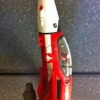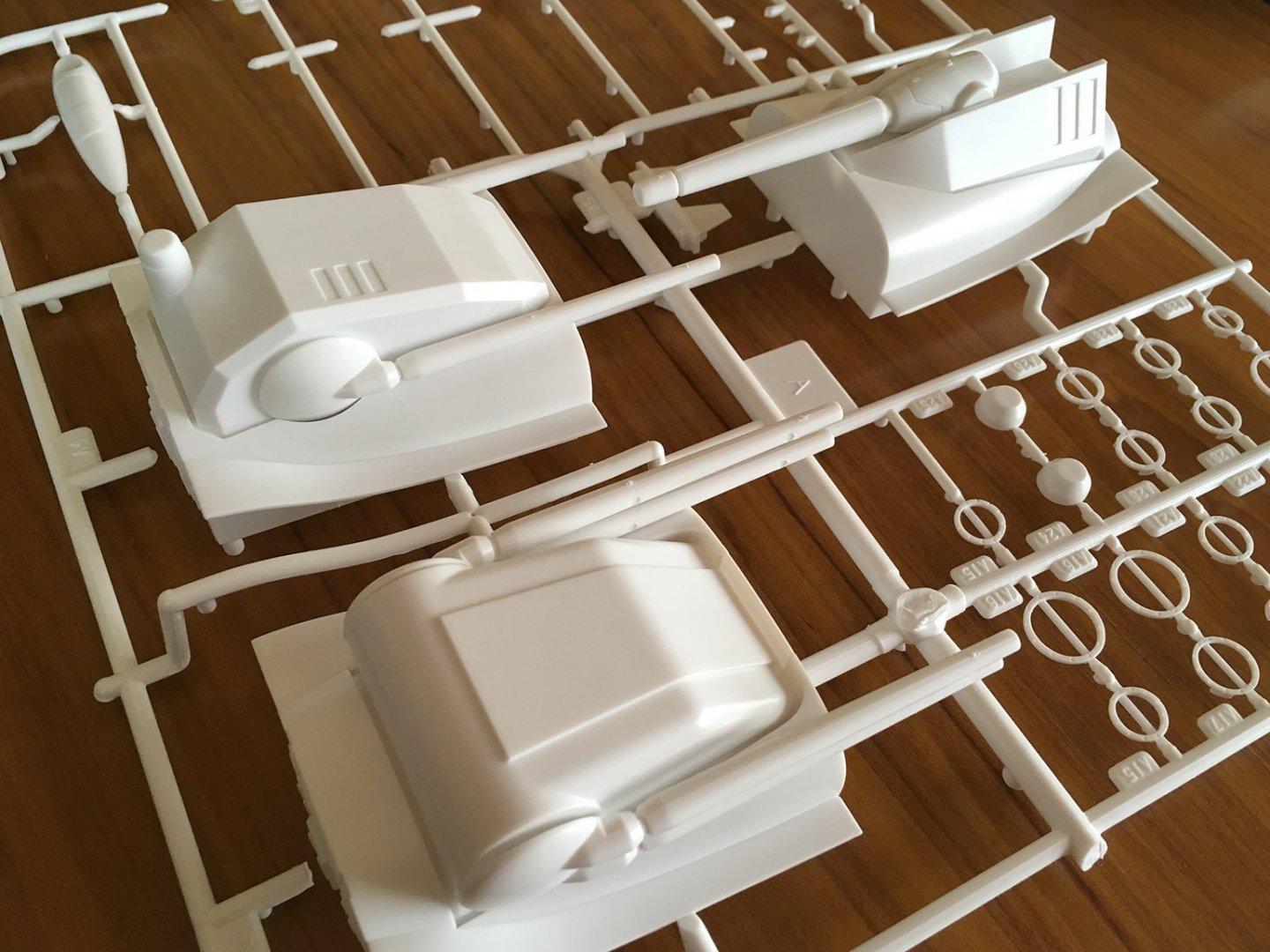-
Posts
516 -
Joined
-
Last visited
Content Type
Profiles
Forums
Events
Gallery
Posts posted by GMK
-
-
Boo on the backpack.
The Master File incorporates the USN/USAF methodology of grouping series production into “blocks” within a variant. In the real world, this practice goes back to WW2. An example could be the F-16C, it could be further distinguished as a Block 30, or Block 32, or Block 40 etc. The specific characteristics of aircraft by block differ.
The Master File books on the VF-1 rationalised the differences between SDFM & DYRL VF-1 by saying that the SDFM were early block aircraft (Block 5 rings a bell), and the DRYL VF-1 incorporated differences (instrument panel, controls, seat) as they belonged to a later production block. I’m considering building a VF-1 and ascribing it to a later-than-SDFM production Block, but not quite at DRYL standards, if that makes sense?
-
2 hours ago, tekering said:
Well, the hands, the pilot, and the cockpit details are all DYRL-specific, so you'd have to get pretty creative if you want a TV-accurate Hikaru VF-1J...
All just modelling “challenges” - but, yeah, I get it. May just use the Macross Master File methodology and build a block that crosses over between the Block 5 (SDFM) & Block x (DYYL?).
-
26 minutes ago, Chronocidal said:
So, one thing that might shed some light on the intake gaps.. I think I've seen those done before. I want to say that the 1/48 Hasegawa kit has something similar, but I would have to check the assembly instructions.
In terms of actual aircraft, there's a reason for those sorts of structures, and it usually has to do with airflow boundary layer separation. Lots of older generation aircraft had those separation gaps behind intakes. Obviously they're not always necessary, but there's at least a real life precedent for that shape.
I think @tekering is referring to the gaps on the inside/inboard top of the intake, where the top and side don’t intersect quite correctly.
I’m hoping that the intakes can be built “open”, as well, but can’t see the intake turbine face parts on the sprues that have been shown.
-
@tekering - again, thanks for your pics to date. It does look impressive. Could I trouble you for a pic of the muzzle of the gun pod? Cel-shading this as Hikaru’s VF-1J or a CF VF-1A is starting to sound appealing.
-
I’m looking for the old-school pics of cel-shaded cannon fodder VF-1, preferably in Gerwalk mode. The Macross Mecha site has one pic, but only the left three quarter view.
-
Does the Gerwalk look as though it can be finished without using the Super/Strike parts?
-
Yep, starting to regret my purchase.
-
-
@tekering thanks for the overview. Would you mind taking a pic of the A & J heads?
-
On 11/24/2018 at 10:13 AM, nightmareB4macross said:
Now that would be an interesting idea for PlaMax to market. I could get behind something like this if they offered all the pilots for DYRL and SDFM for all VF/E/T and A/S/J/D configurations.
A set of separate heads paired with pilots would be sweet.
-
This just in from AmiAmi:
Subtotal: 32,980 JPY
Shipping: 15,600 JPY
GST: 4,858
Grand total: 53,438 JPYThat is to Australia via EMS.
-
Lovely work in an excellent scheme. Did you paint up the ordnance, yet?
-
45 minutes ago, kalvasflam said:
I do wonder though if countries should be really looking at themselves as part of an integrate whole rather than a stand alone when it comes to their military budgets. For example, if you were the Benelux countries, what would be the most effective bang for the buck, and then given the context that the countries are part of NATO. The calculus changes of course if there was no NATO or no nearby allies that can provide immediate support.
If we take a more distant example, Australia, you can kind of see their rationale for the type of planes they've picked. F-35 for the more advanced air to air role, superhornets to act either as missile trucks or in an anti surface role once anti-air assets are cleared out, Growlers to support in EW role as needed, given their country's proximity to potential enemies, P-8s to provide maritime coverage, and tankers to extend range. This works very well with their geography and the relative lack of immediate allies nearby unless there happens to be US carriers in the vicinity. But the scarcity of potential adversaries helps as well, the closest potential problem would be Indonesia, and that's not a real issue. China would not be going that far anyway. So, a limited number of -35 with perhaps more super hornets could make sense for the next fifteen to twenty years.
So, apply that thought to the Canadians, and may be they could be thinking about a different air to air mix. For example, given the larger territory, wouldn't it be better to have fighters with longer legs, extra tanker support (not necessarily rely on the US for that), and more maritime capabilities. The likelihood of facing off against enemies with 5th generation fighters are low. So, at least from that view, the -35 might not be the very best option.
Good points & rationally argued. That said, the rationale underpinning your point doesn’t seem to take into consideration expeditionary operations as part of a coalition, or to meet alliance commitments that occur outside domestic or near-domestic airspace.
-
6 minutes ago, Shadow said:
Seems all the more likely Canada could give the Gripen NG or Typhoon more serious looks.
With cost being a major driver, I can see Gripen NG getting a look in. Typhoon now has a higher unit price than the F-35A, reportedly.
-
42 minutes ago, Sanity is Optional said:
I have zero idea where I'm going to put either the box, or the completed model.
Furniture?
-
2 hours ago, TMBounty_Hunter said:
Which blog?
Link?
Plamax Blog:
https://plamax.exblog.jp/29793871/

Sadly, it’s only referring to the Masterfile on the VF-1 Battroid.
-
The blog shows CAD of a VF-1A battroid....hmm.
-
Made some progress on my Tamiya 1/16 Abrams that I’m building as an Australian vehicle. Used a custom masking service to get vinyl masks made. Results so far have been promising.


Still some cleaning up to do.
-
That VF-1J is stunning! Love that scheme.
-
Had a spot of “expeditionary modelling” this week. Helped a mate to paint a show model for a major trade show.

Just like being a specialist. Provide the list of equipment, level of preparation, and book a time - turn up and it’s ready to go.
In my defence, the model was bolted down and couldn’t be moved. Plus, I’d never used that airbrush & compressor before.
-
Done some surface prep:

-
Print done, cleanup to come:

-
Printing continues apace...

-
Backpack done...




Max Factory 1/20(!) VF-1S/A Hikaru
in Model kits
Posted
Well, mine has landed in Australia. Should arrive this week.